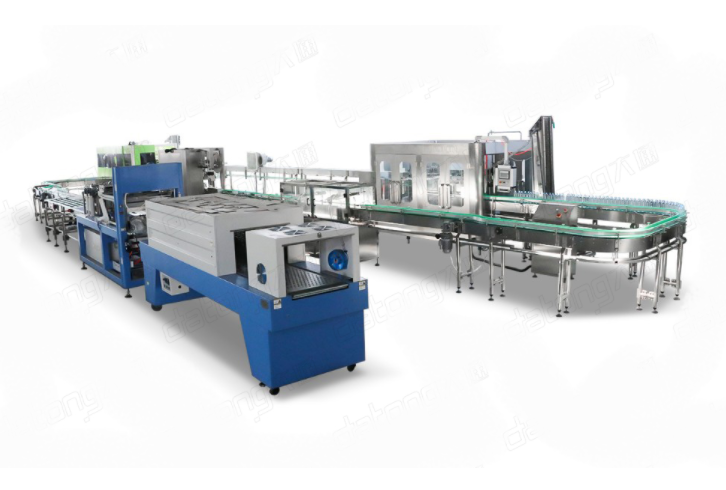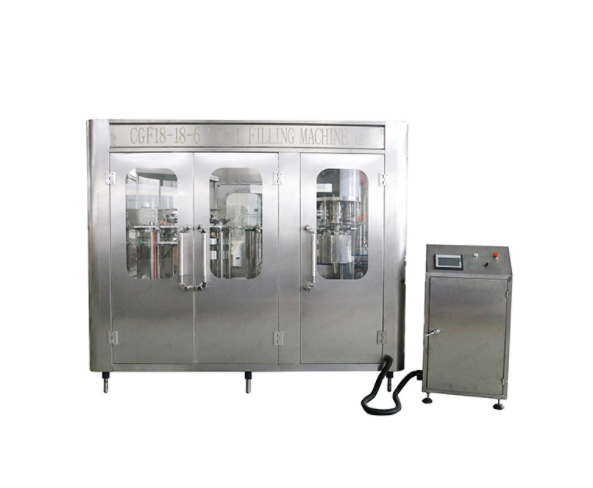How does a water filling machine works?
Views: 418
Author: Site Editor
Publish Time: 2021-08-26
Origin: Site
Water filling machine work according to the gravity filling principle. These machines need a different number of operators depending on the degree of automation (semi-automatic or fully automatic).
We explained the working principle of automatic water filling machines, which are quite common and preferred for you. Thanks to this article, you will learn the basic information you need to know about a water filling machine.
First, let’s explain the general working principle of liquid filling line. Liquid products are filled in bottles with some exceptions. Cardboard boxes, pouches, and cans are also products for liquid filling except for bottles. Since it is the most preferred bottle in water filling, we will give you extensive information on bottle liquid filling.

Water Filling Machine Working Principle
Liquid bottle filling machines perform 3 main operations:
Washing
Bottles are placed on the conveyor and taken to the washing unit. Their inside and outside are washed with distilled water and dried.
Filling
Bottles come to the filling unit by the conveyor and are filled into the bottle by different methods according to the filling liquid viscosity.
Sealing
Filled bottles are sealed in this section until they are opened by the end user. The sealing unit should be attached to the liquid filling machine for the sealing process, which is important for safety and hygiene.
Now we will examine the gravity filling system, which is the working method of water filling machines.

How Does a Pump Filling Machine Work?
Pump filling machines, whether tabletop, semi-automatic or fully automatic, use one pump for each fill head on the machine. The pump assists in moving liquid through the product pathway and in to waiting container, making the machine a good solution for thicker, or less free-flowing, liquids. The type of pump used for any given project will be chosen based on the product being run, the fill sizes, the existence or non-existence of particulates and other relevant factors of the packaging task.
Pump filling machines can also measure liquids during the fill in two different manners, again depending on the project, pumps and goals of the fill. A time based fill on these machines simply allows the pump to run for a pre-set amount of time each cycle. Simple timers or a PLC will assist operators in setting the necessary times, and pump speed may be adjusted for more accurate fills as well. The second method used on these liquid fillers is referred to as a pulse based fill. The pulse based fill will measure the revolution or other movement of a pump component each cycle. For example, on a project using a gear pump, each pulse may be equivalent to a quarter turn of the gear, with 10 pulses completing the cycle. Either method will provide an accurate volumetric fill and for some products and projects either method may be used.
Different pump types will be chosen to efficiently and accurately complete the fill. The gear pump referenced above will capture product between the teeth of the gears to direct it through the product pathway and to the waiting bottles. Lobe pumps, progressive cavity pumps and many others offer different methods of moving product. Some pumps offer advantages for certain filling projects. For example, the peristaltic pump uses rollers to move product through tubing without having the rollers actually contact the product, making this pump a good choice for sanitary projects or for filling numerous different products or flavors. No product contact parts aids in creating a sanitary process and simple tube changeover protects against contamination from product to product or flavor to flavor.
Generally, pump filling machines will be employed when a product requires some assistance with product flow. Thick products that do not flow freely and products with particulates require more than simple gravity to push the liquid through the product pathway. However, pump filling machines are not exclusive to thick products and can handle a wide range of liquids while providing an accurate fill by volume.
About Datong
Zhangjiagang Datong Machinery Co.,Ltd was founded in 2002. Actually has been specialized in Water & beverage packaging solutions over 16 years. Modern factory of 6000 square meters, all kinds of advanced processing equipment and testing equipment, experienced technicians, scientific and strict management, constitute DATONG excellence in manufacturing system.Over 40 countries use our machines. If you are looking for a reliable merchandise of Water Filling Machines, please contact us now!





